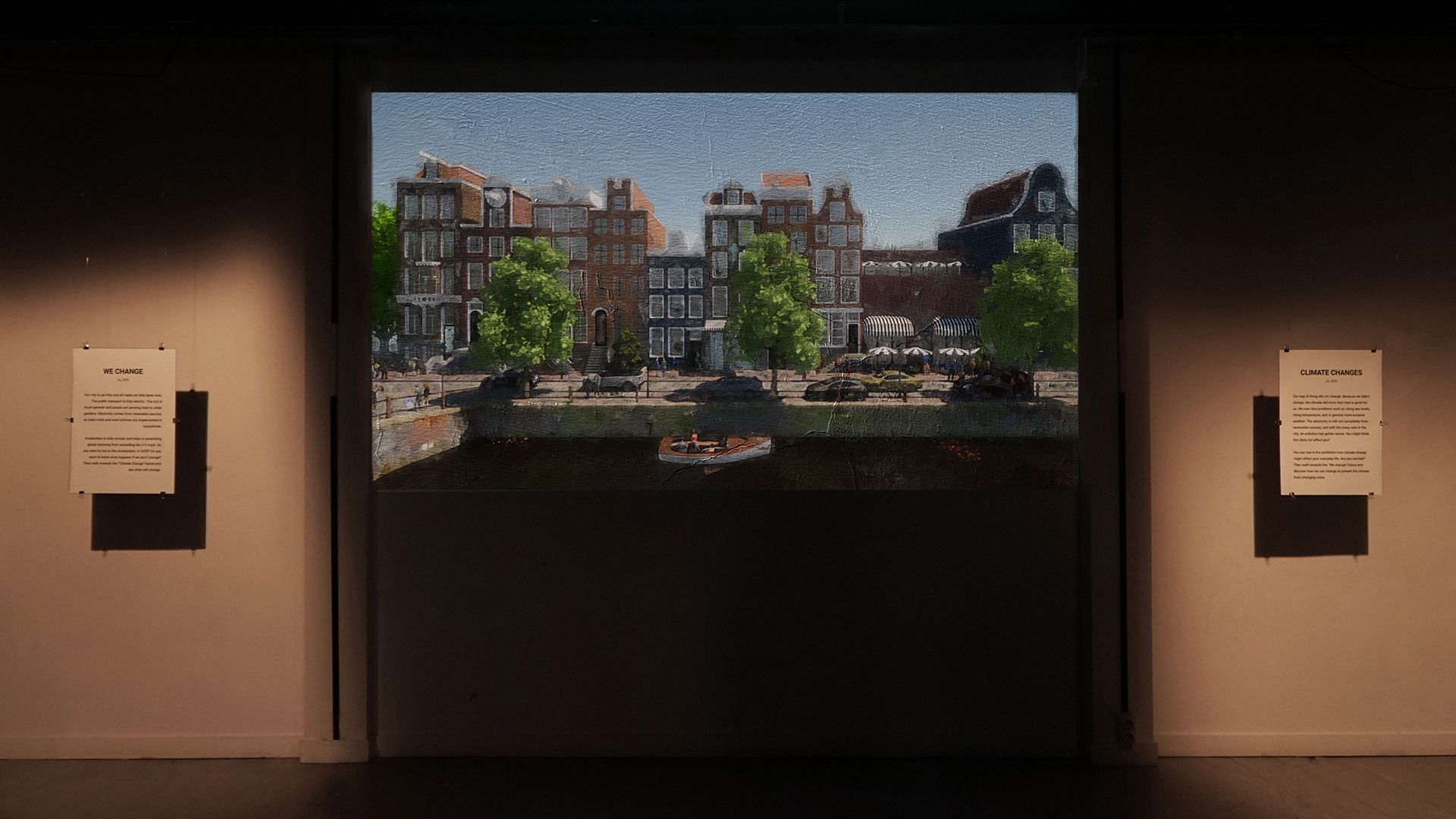
Unified Volunteer Network
Helping the community through stronger unity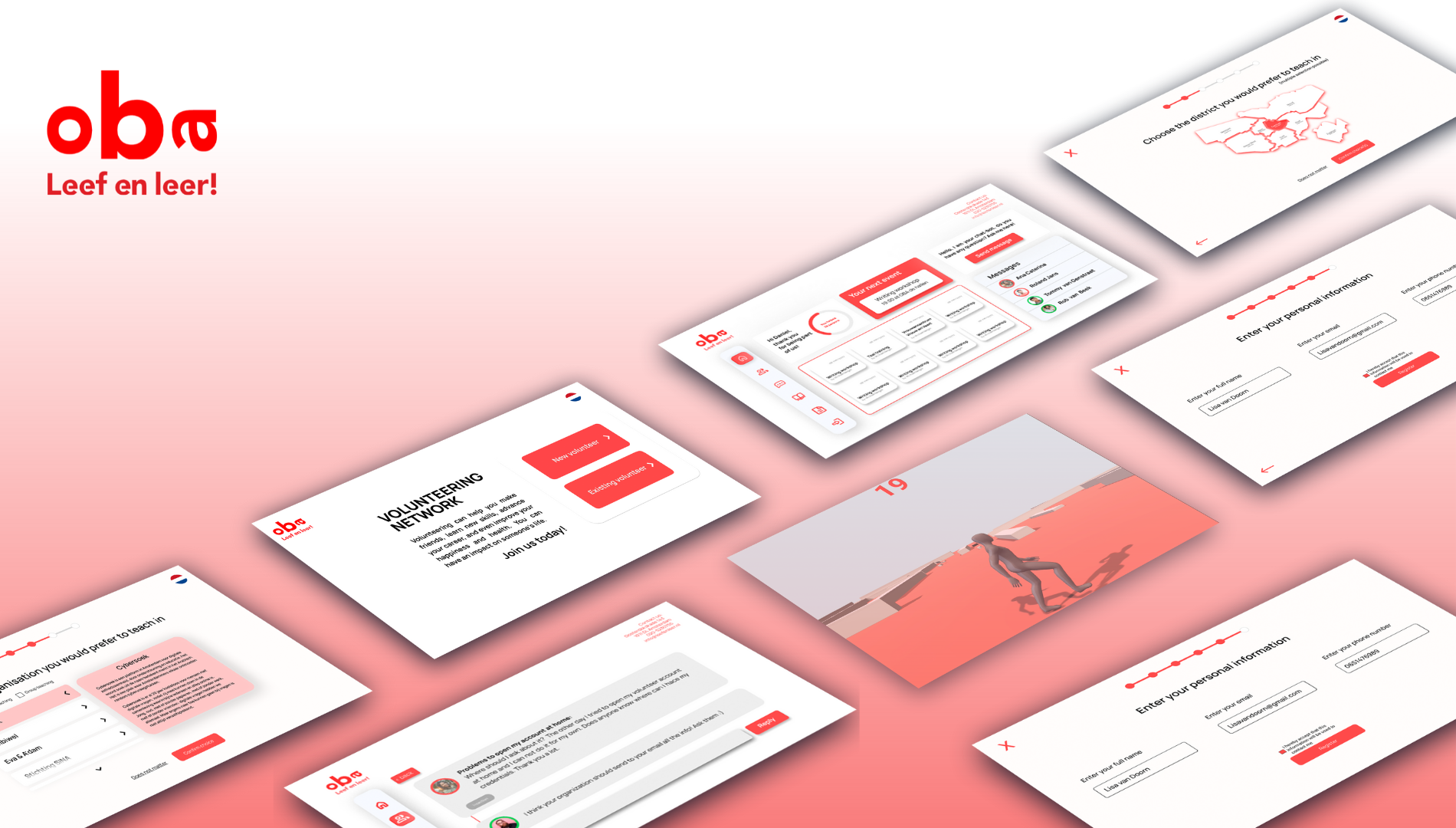
-
Client:
Amsterdam Public Library
- Team:
-
Disciplines:
UX/UI, Visual Design, Game Design
-
Schoolyear:
2021-2022
Amsterdam is home to many volunteers who, with the help of its public library (OBA) and external volunteering organisations, teach people to read, use the computer or speak Dutch. However, the needs of these volunteers are often unmet due to poor communication with the involved organisations, which hinders their teaching. Improving these services, which ensure better quality of life for thousands of people, is essential.
Before diving deeper into the problem space, it is worth examining the structure of the volunteering services. Those who wish to teach basic skills need to become members of a volunteering organisation who can host them. These organisations in turn get support (such as supplies, teaching spaces, and workshops for volunteers) from the OBA. However, to many volunteers this feels like a tangled web that is impossible to navigate.
Overall, we were faced with two major challenges. Firstly, the OBA expressed the need to recruit more volunteers since registration rates were low. But, most importantly, they needed a way to always be updated on what their volunteers’ needs are in order to accommodate them swiftly.
We started by interviewing people who volunteer now or have done so in the past, to analyse their motivations behind this prosocial behaviour. A useful insight from this data was that only a small portion of responders were motivated to volunteer by external benefits like monetary incentives. The big majority volunteered purely to help others and feel good about themselves. This steered us away from recruiting new volunteers by offering gains, which is also unsustainable in the long run.
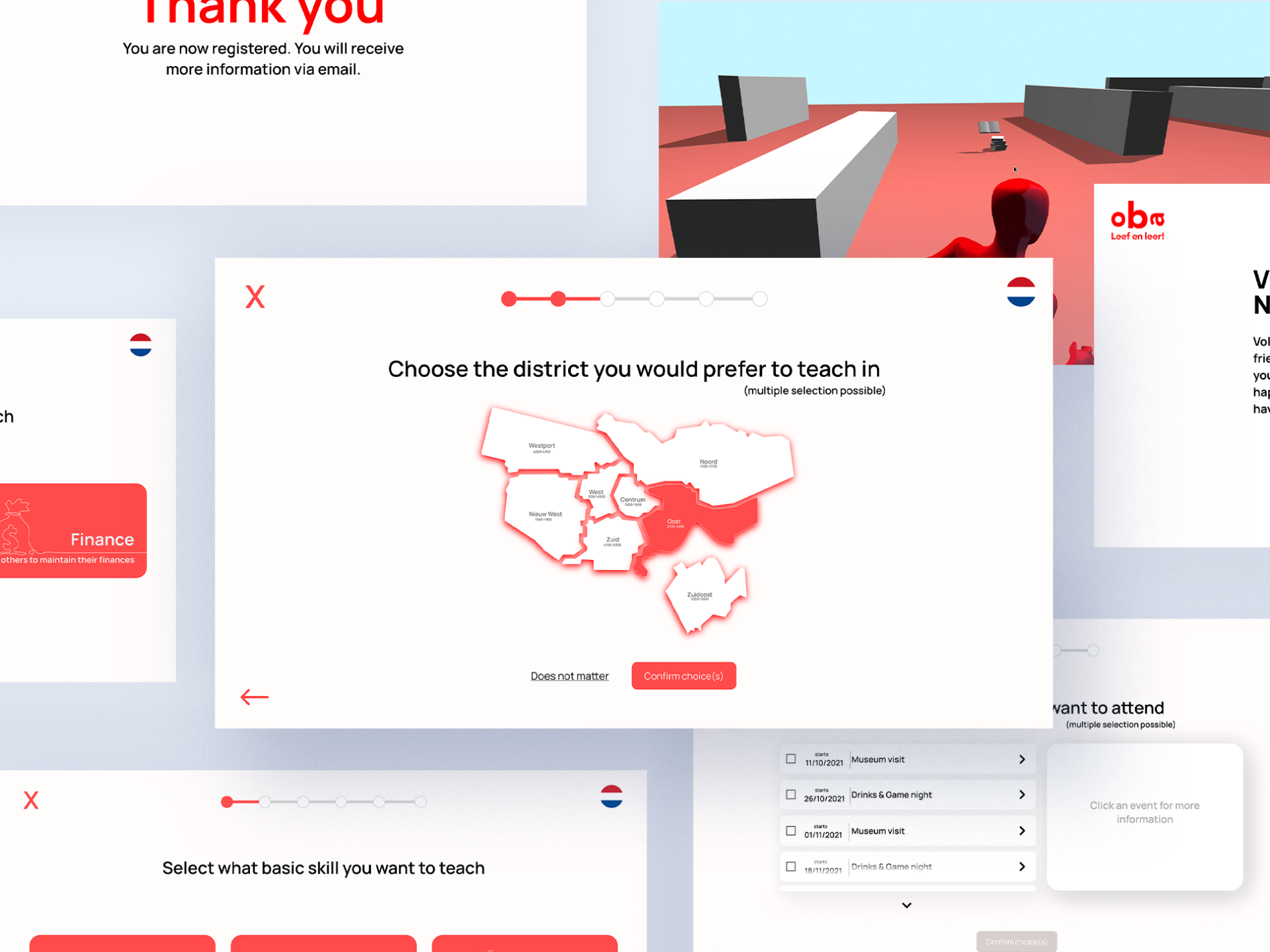
Attracting new volunteers
Instead, we attracted new volunteers by making the process of registering much simpler. We designed a touchscreen display to be placed at the entrance of all OBA locations, providing thousands of people entering the libraries with a means of discovering that they can help others, and how to go about it. This information is preceded by a short (optional) prosocial game, which has been empirically shown to increase the likelihood of engaging in prosocial behaviours.
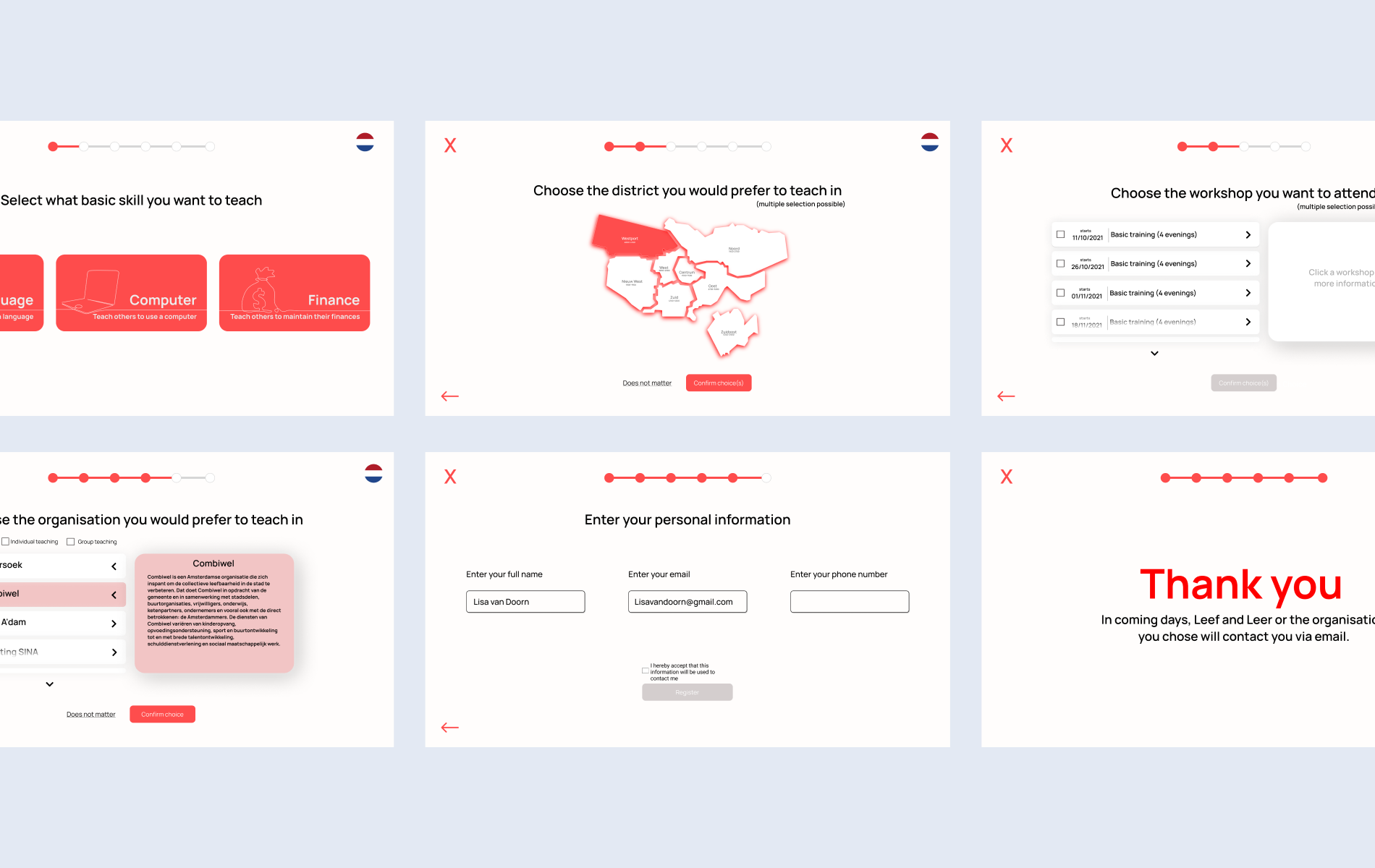
Did it work?
To test this solution, we placed a clickable prototype at the entrance of the main OBA location and observed from a distance. In 30 minutes of observations, more than 50 people looked at the screen, around 10 people approached and interacted with it, and 2 persons decided to sign up to become volunteers.
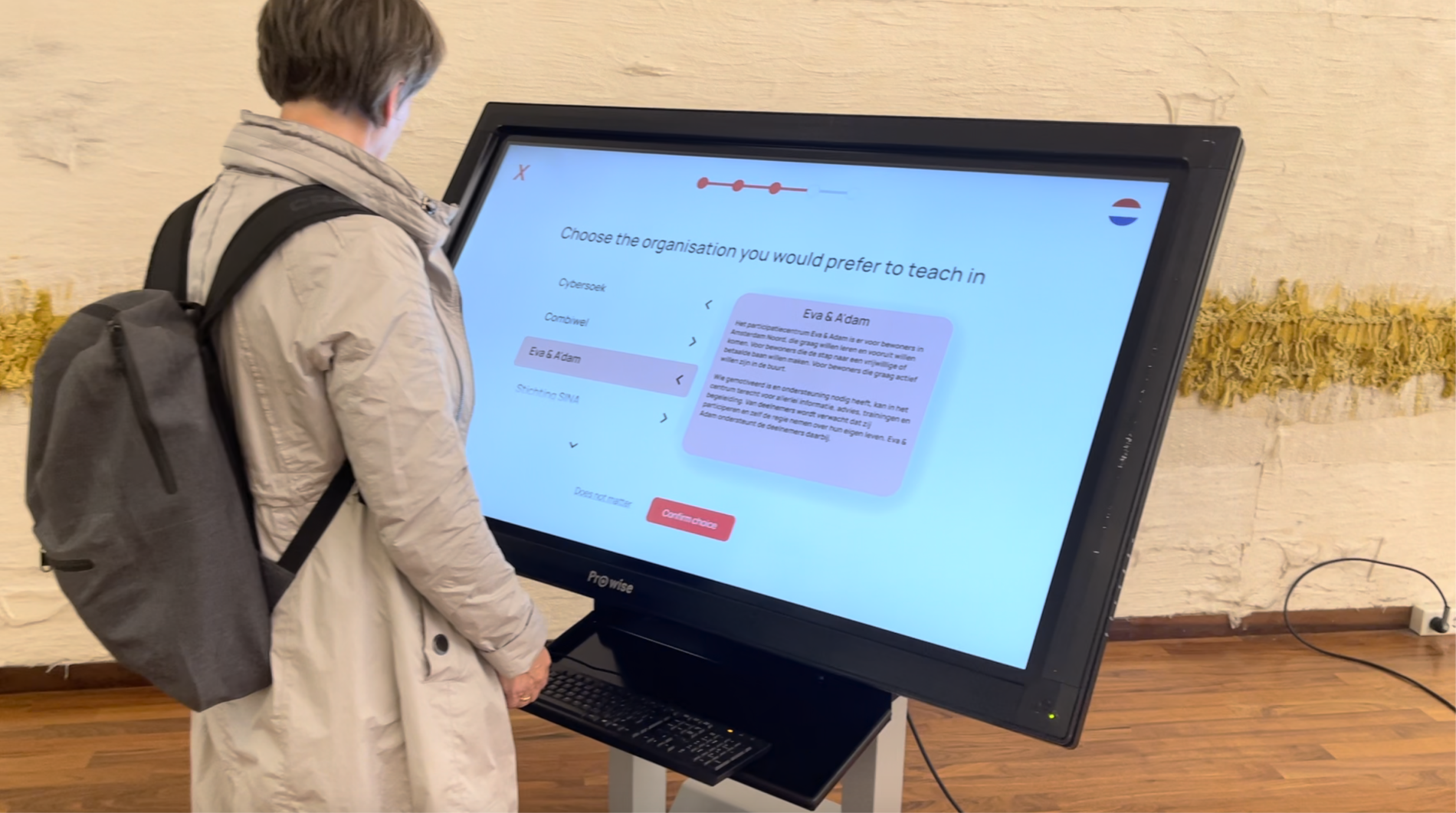
Discovering and accommodating current volunteer needs
To better understand how we can improve the functioning of the volunteering network, we attended an event organised by the OBA and spoke with both volunteers and representatives of volunteering organisations.
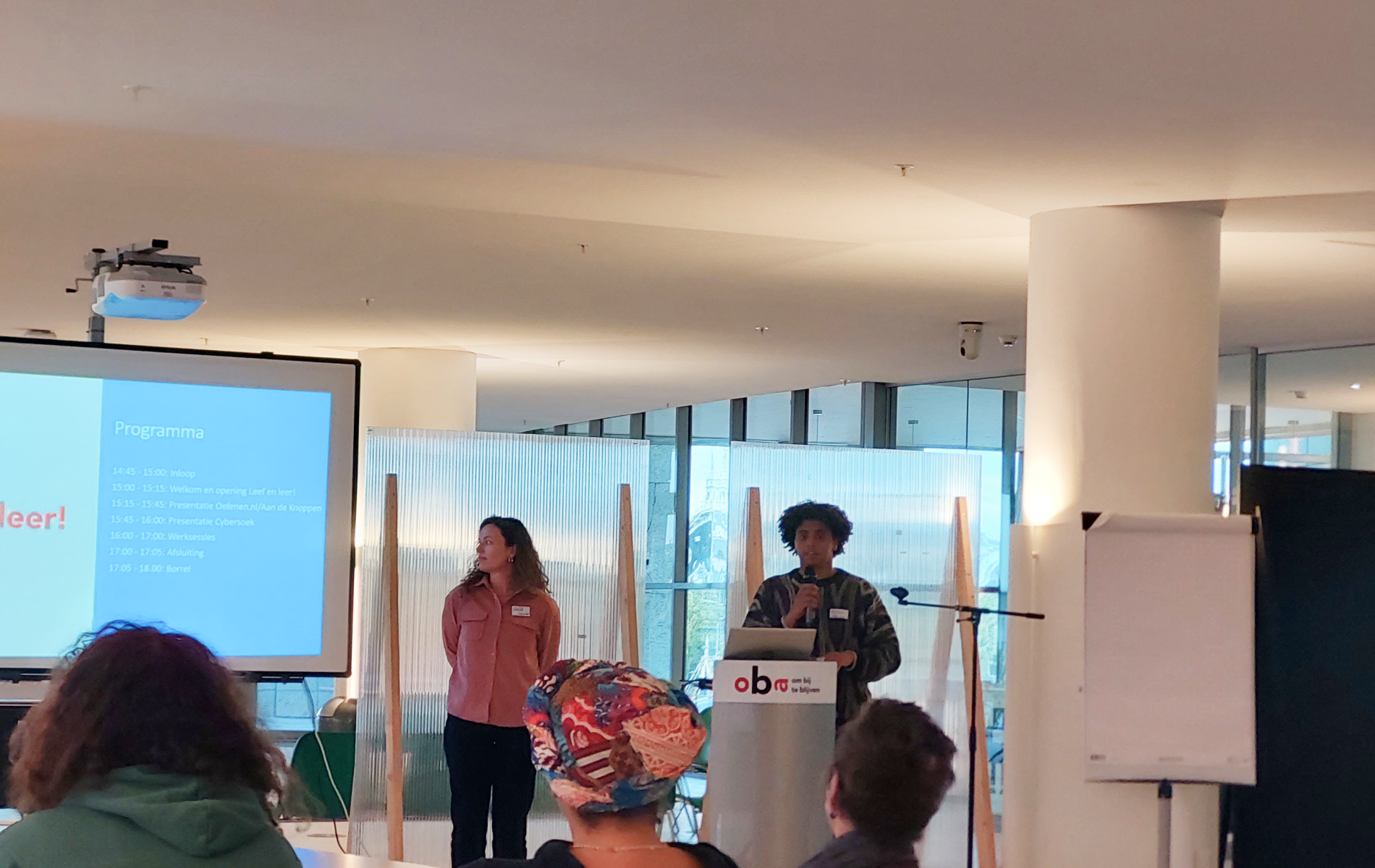
Both sides expressed a lack of communication between each other as well as disorganisation in their functioning. For example, classes were often scheduled through word of mouth or social media, and the same is true for the workshops provided to the volunteers. Moreover, volunteers had no means of expressing what teaching supplies they needed. Finally, they expressed a desire for a stronger community and social events. We saw that we needed to unify this volunteering network through an online platform that would serve as a one-stop place for all volunteer needs.
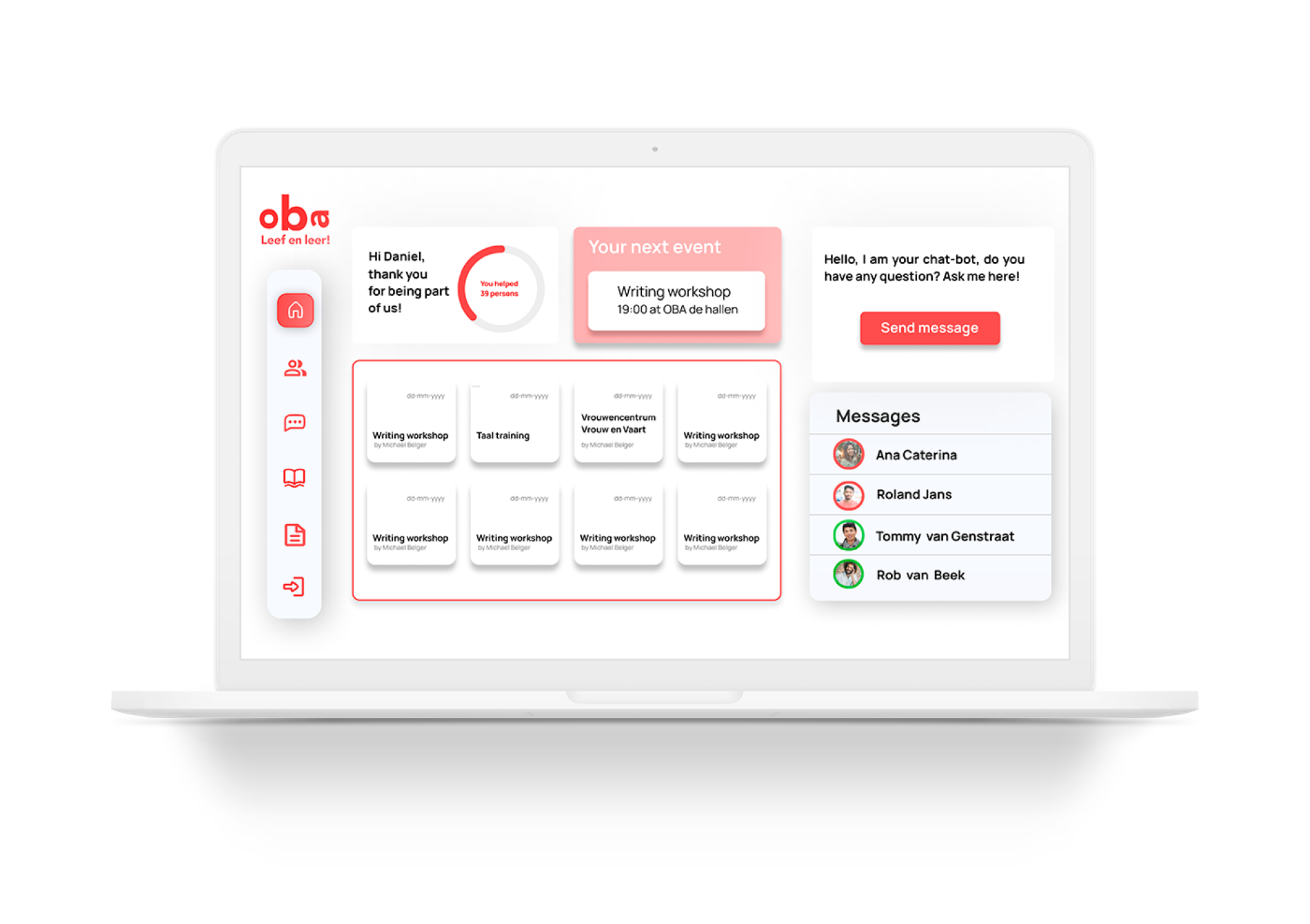
Through this platform, volunteers can now have a clear overview of their upcoming classes, workshops and social events. Moreover, they can request teaching spaces and supplies directly to the OBA, significantly decreasing the waiting time. Finally, they have an easy way of staying in touch with their organisations, students and between themselves.
What pushed us to work hard on these solutions is the hope that by optimising the functioning of the volunteering network, we can contribute to more and more people acquiring the basic skills that will improve their quality of life.


